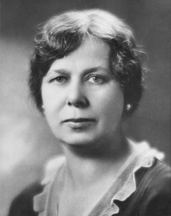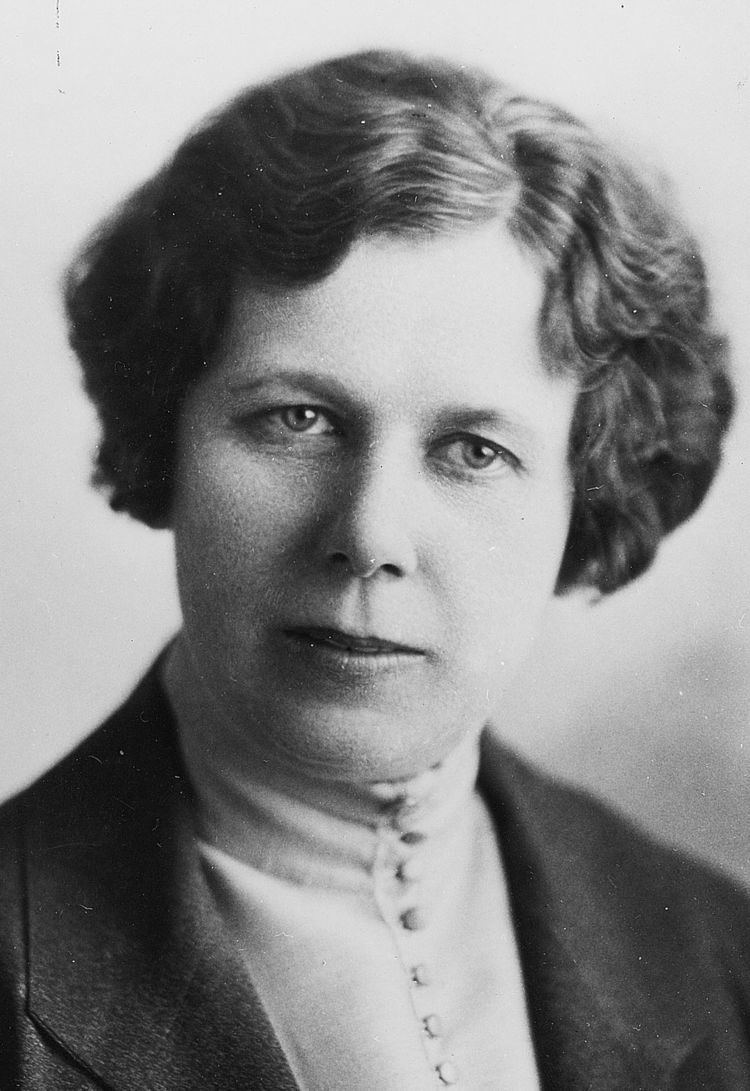Spouse(s) None Role Politician | Nationality American Name Gladys Pyle Succeeded by J. Chandler Gurney Religion Presbyterian Party Republican Party | |
 | ||
Born October 4, 1890Huron, South Dakota ( 1890-10-04 ) Died March 14, 1989, Huron, South Dakota, United States | ||
Gladys Pyle (October 4, 1890 – March 14, 1989) was a South Dakota politician and the first woman elected to the United States Senate without having previously been appointed to her position; she was also the first female senator to serve as a Republican and the first female senator from South Dakota. She was also the first unmarried female senator.
Contents

Early life

She was born to John and Mamie (Shields) Pyle on October 4, 1890, in Huron, South Dakota. Gladys was the youngest of four children. Her father was a lawyer who served as Attorney General of South Dakota. He was also a patron of Huron College, which from which Gladys graduated in 1911.
Activism and career
Gladys, her mother Mamie, and two sisters were very involved in the Women's Suffrage movement and frequently hosted meetings of the local chapter in their house.
She taught in the public high schools at Miller, Wessington, and Huron from 1912 to 1918. In 1923 she became first woman member of the State House of Representatives, serving from 1923–1927. Pyle then served as Secretary of State of South Dakota from 1927–1931 and ran unsuccessfully for the Republican Party (GOP) nomination for governor in 1930, garnering nearly a third of the vote in the primary but losing after seven recounts of the votes. She was a member of the State securities commission from 1931–1933. She engaged in the life insurance business in private life.
On November 8, 1938 she was elected as a Republican to the United States Senate to fill the vacancy caused by the death of Peter Norbeck. Norbeck died in December 1936, which allowed the governor of South Dakota to appoint a replacement, and he appointed Herbert E. Hitchcock. Hitchcock lost the 1938 election for a full term to John Chandler Gurney. A quirk in South Dakota law required Hitchcock to step down following the November 1938 election, which would have created a vacancy before Gurney was sworn in in January 1939. To fill the two month vacancy, South Dakota pushed for a special election because of rumors that President Franklin D. Roosevelt would call a special session of Congress to be held before January. Pyle was selected as the Republican candidate in part because she had enough name recognition that Republicans would not have to devote many resources to the special election campaign. She campaigned against the New Deal, arguing the program had not gone far enough to help the people of South Dakota. On the same day that Gurney won election to a full term, Pyle easily defeated Democrat J. T. McCullen Sr. for the short one.
After the election, Pyle traveled to Washington, D.C. at her own expense, accompanied by her mother and one aide. No special session was called, so Pyle did not have the opportunity to perform any Senate duties before her term ended. In January 1939, Pyle returned to her insurance business, and remained closely involved in public service work. In 1940 she became the first woman to deliver a presidential nominating speech at a national convention, speaking on behalf of candidate Wendell Willkie.
In addition to resuming her career in the life insurance business, Pyle also engaged in farm management. She later became a member of the South Dakota Board of Charities and Corrections 1943–1957 and agent for Northwestern Mutual Life Insurance 1950–1986.
Gladys Pyle died in Huron on March 14, 1989. Her ashes are interred in Riverside Cemetery with her relatives.
Legacy
The family home that she lived in from 1894 until 1985 is on the National Register of Historic Places and has been converted into a museum. It is largely unchanged from when it was built and has many of the original furnishings. The carpeting, wallpaper, windows (including three stained-glass sections), doors, interior layout, radiators, door hardware, and wood finish are original or nearly so. In fact, although a more modern gas-powered furnace has replaced the original coal-fired one, the original ornate radiators still heat the house.
The home remained largely in its original state due to the death of Gladys' father, John Levi Pyle, in 1902 of typhoid fever. John Pyle was a local attorney as well as local politician, so after his death his family had to work hard to keep the house, and little money was available for new furnishings or interior decorations.
The house contains numerous Pyle family artifacts, including her maternal grandfather's discharge papers from the 2nd New Jersey Infantry (dated March 27, 1866), photos of both of Gladys' grandparents, and the Pyle family Bible dating to the 1840s. The Huron College Rubiquat from the early 1900s (featuring pictures of her two sisters as students) is on display as well. Also, a ballot that she appeared on is framed next to the downstairs bathroom, and her father's cavalry sword and uniform from his duties as general of the South Dakota Regiment (the precursor to the South Dakota National Guard) are on display.
